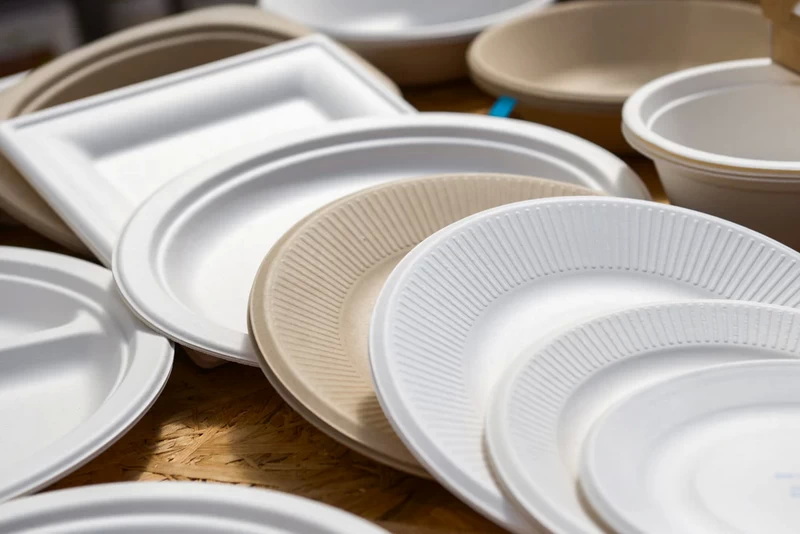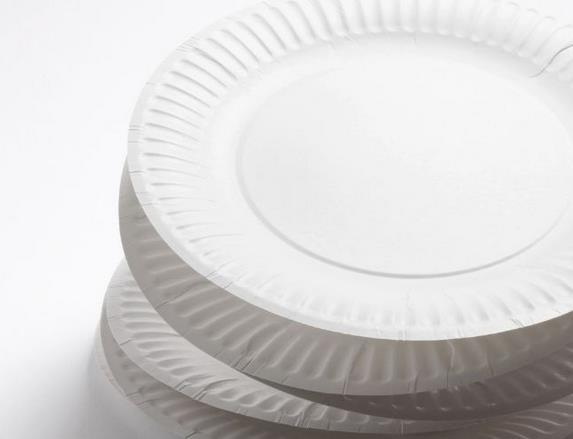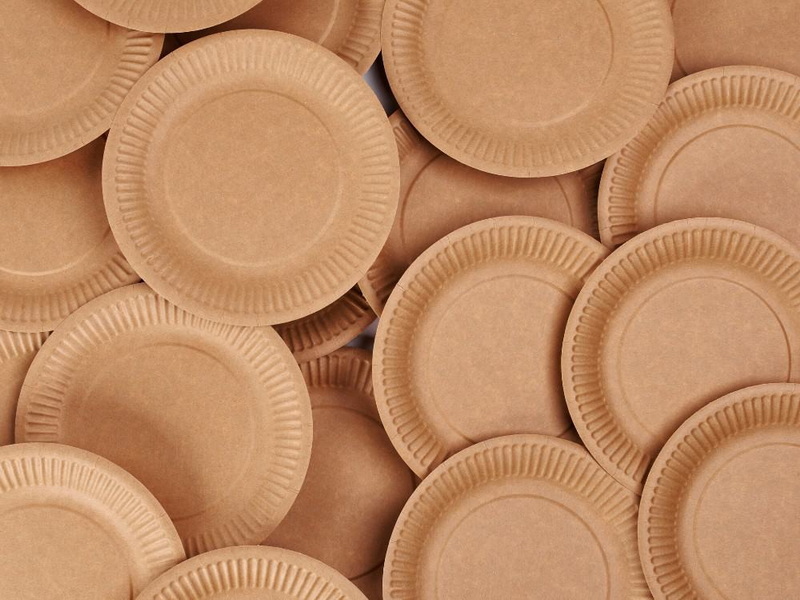
Content Menu
● The Basics of Paper Plates
>> Composition of Paper Plates
● Can Paper Plates Be Recycled?
● The Recycling Process
● Composting as an Alternative
● Environmental Impact of Paper Plates
● Eco-Friendly Alternatives
● The Lifecycle of Paper Plates
● Health Considerations
● Conclusion
● FAQ
>> 1. Are all paper plates recyclable?
>> 2. What should I do with used paper plates?
>> 3. How can I tell if my paper plate is recyclable?
>> 4. What are some eco-friendly alternatives to disposable paper plates?
>> 5. Why can't contaminated paper plates be recycled?
● Citations:
Disposable paper plates have become a staple in many households and events due to their convenience and affordability. However, as environmental awareness grows, many people are questioning the ecological impact of these products, particularly regarding their recyclability. This article explores the complexities surrounding the recyclability of disposable paper plates, the materials used in their production, eco-friendly alternatives, and the broader environmental implications.

The Basics of Paper Plates
Disposable paper plates are primarily made from paper pulp, which is derived from trees. While they seem like an eco-friendly option compared to plastic or styrofoam plates, their recyclability is not straightforward.
Composition of Paper Plates
- Uncoated Paper Plates: These are made entirely from paper pulp and do not have any plastic or wax coating. They are generally more recyclable.
- Coated Paper Plates: Many disposable plates are coated with wax or plastic to enhance durability and moisture resistance. This coating complicates the recycling process and often renders the plates non-recyclable.
- Biodegradable Options: Some manufacturers produce biodegradable plates made from materials like sugarcane bagasse or palm leaves, which decompose more easily than traditional paper plates.
Can Paper Plates Be Recycled?
The short answer is: it depends. Here are some key points to consider:
- Clean vs. Contaminated Plates: For a paper plate to be recyclable, it must be clean and free from food residues. Contaminants such as grease or leftover food can render the entire batch of recyclables unusable.
- Local Recycling Guidelines: Recycling capabilities vary significantly by location. Some recycling facilities can handle uncoated paper plates, while others may not accept any paper plates at all due to contamination concerns.
- Material Coatings: As mentioned earlier, coatings like plastic or wax can prevent recycling. Facilities equipped to recycle these materials are rare.
The Recycling Process
When a clean, uncoated paper plate is placed in a recycling bin, it typically undergoes several steps:
1. Collection: Paper plates are collected along with other recyclables.
2. Sorting: At the recycling facility, items are sorted based on material type. Uncoated plates may be separated from those with coatings.
3. Cleaning: Clean paper plates are washed to remove any contaminants.
4. Pulping: The clean plates are ground into pulp and mixed with water and chemicals to break them down further.
5. Screening and De-Inking: The pulp is screened to remove impurities and de-inked if necessary.
6. Drying: The clean pulp is dried and rolled into sheets for reuse in new paper products.

Composting as an Alternative
If recycling isn't an option, composting may be a viable alternative for certain types of paper plates:
- Compostable Plates: Look for labels indicating that a plate is certified compostable. These plates break down in composting conditions without leaving harmful residues.
- Home Composting: Clean, uncoated paper plates can be added to home compost piles where they will decompose over time, enriching the soil.
Environmental Impact of Paper Plates
While disposable paper plates offer convenience, they also contribute to environmental issues:
- Deforestation: The production of paper products requires cutting down trees, which can lead to habitat loss and biodiversity decline.
- Water Usage: Manufacturing paper products consumes significant amounts of water—approximately 3 gallons for a single sheet of paper.
- Waste Generation: Even if composted, disposable plates still contribute to waste generation compared to reusable options.
Eco-Friendly Alternatives
To mitigate environmental impact, consider these alternatives:
- Reusable Plates: Opt for ceramic or stainless steel plates that can be washed and reused multiple times.
- Compostable Options: Choose biodegradable plates made from natural materials like bamboo or palm leaves for single-use occasions.
- Peelable Plates: Innovative products like peelable paper plates allow users to remove layers after each use, significantly reducing waste generated per meal.
The Lifecycle of Paper Plates
Understanding the lifecycle of disposable paper plates helps illuminate their environmental impact:
1. Raw Material Extraction: The process begins with logging trees for pulp production. This contributes directly to deforestation and habitat destruction.
2. Manufacturing Process: The production involves significant energy consumption and water usage. Chemicals used in bleaching can also pollute waterways if not properly managed.
3. Distribution: Transportation adds another layer of carbon emissions due to fuel consumption during shipping to retailers or direct consumers.
4. Usage Phase: While convenient for events, each use results in waste generation that often ends up in landfills if not recycled or composted properly.
5. End-of-Life Disposal: Many disposable paper plates cannot be recycled due to contamination or coatings; thus, they contribute substantially to landfill waste where they may produce methane—a potent greenhouse gas—during decomposition.
Health Considerations
Another aspect worth considering is health safety concerning disposable tableware:
- Chemicals in Production: Some disposable paper plates undergo chemical treatments that may leave harmful residues if not properly managed during production.
- Food Safety Concerns: Certain coatings used on disposable plates (like PFAS—perfluoroalkyl substances) have raised health concerns due to their potential leaching into food items served on these products.
Conclusion
In conclusion, while some disposable paper plates may be recyclable under specific conditions, many end up in landfills due to contamination or improper disposal methods. Understanding the materials used in these products and local recycling guidelines is crucial for making environmentally responsible choices. For those looking to reduce their ecological footprint, opting for reusable or certified compostable options is a more sustainable path forward.

FAQ
1. Are all paper plates recyclable?
Not all paper plates are recyclable; it depends on whether they are coated with plastic or wax and if they are clean from food residues.
2. What should I do with used paper plates?
If they are clean and uncoated, you can recycle them; otherwise, consider composting them if they are certified compostable.
3. How can I tell if my paper plate is recyclable?
Check for labels indicating it is uncoated or certified compostable; otherwise, local recycling guidelines will provide clarity on what can be recycled.
4. What are some eco-friendly alternatives to disposable paper plates?
Reusable ceramic or stainless steel plates and compostable options made from bamboo or palm leaves are excellent alternatives.
5. Why can't contaminated paper plates be recycled?
Food residues and oils contaminate the recycling process, making it difficult for facilities to process them effectively without compromising other recyclables.
Citations:
[1] https://greencitizen.com/blog/are-paper-plates-recyclable/
[2] https://www.bambuhome.com/blogs/bambuliving/compostable-vs-disposable-plates
[3] https://www.anchenggy.com/blog/disposable-plates-vs-compostable-plates-making-eco-friendly-choices.html
[4] https://www.greenwashingindex.com/eco-friendly-or-silent-polluter/
[5] https://ecofreek.com/biodegradable/6-best-biodegradable-plates-for-your-sustainable-business/
[6] https://emeraldecovations.com/2024/08/understanding-the-environmental-impact-are-paper-plates-compostable/
[7] https://smartyhadaparty.com/blogs/home/paper-plates-vs-washing-dishes
[8] https://foogogreen.com/blog/ecofriendly-alternatives-for-paper-plates/
[9] https://www.wastenotcompost.com/blogs/what-to-know-about-composting-paper
[10] https://www.sustainablejungle.com/paper-plates-recyclable/

















